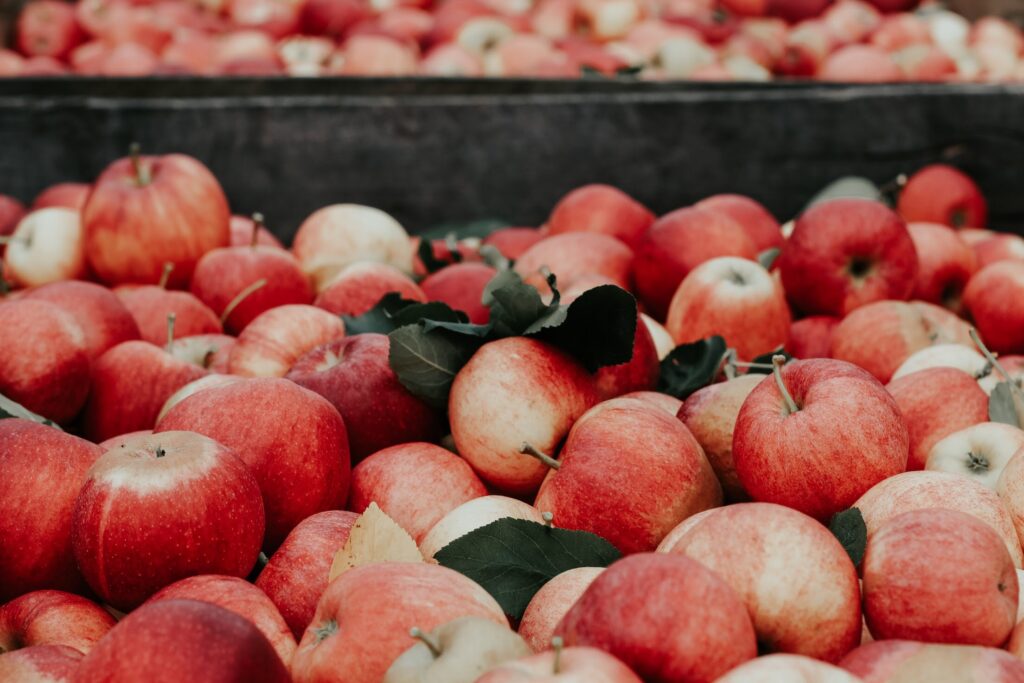By: Jennifer Pasha, uOttawa nutrition student
Establishing a solid foundation of healthy eating habits in children is a journey worth investing in. Parents often find themselves navigating the tricky terrain of picky eating and mealtime struggles. However, there is no need to worry! Check out these practical tips to make mealtime more enjoyable for both you and your kids.
1. Serve Small Servings for a Big Impact

When it comes to healthy eating habits in children, start with small servings. Serving large portions of food on your children’s plate can be overwhelming and might discourage them from trying new foods. By offering small servings, you are providing your children with the opportunity to ask for more if they are still hungry. This gives your children the chance to listen to their bodies and eat according to their hunger cues, which is important for raising intuitive eaters. This can also make your children feel empowered, in control of their eating habits[JO1] , and lead to self-regulation.
2. Take a Long-Term Approach to Mealtime-Battles
When it comes to mealtime battles, we’ve all been there. The classic “Finish your broccoli and you will have ice cream” tactic seems harmless, but research shows that this may have unintentional consequences. Over time, children may be more likely to dislike non-reward foods (e.g. vegetables) and develop negative associations with them. This approach can also lead to constant meal negotiations and interfere with your child’s natural ability to regulate hunger cues.
Instead, try following the principles of the Satter Division of Responsibility in Feeding (sDOR). In this evidence-based approach, you’re responsible for “what to serve” and “when to serve”, and your children decide “how much to eat” and “whether to eat”. This approach fosters positive eating habits and independence, while promoting a balanced relationship with food.
Also, keep exposing your children to different foods and flavours. Research shows that children need to be exposed to a new food 8 to 15 times before they start accepting it. Don’t give up and give their taste preferences time to expand.
3. Be a Positive Role Model and Involve Your Kids in The Kitchen

Getting your kids involved in shopping, cooking, or helping out in the kitchen is a great way to encourage positive eating habits. Research shows that when children are actively involved in meal preparation, they end up eating more fruits and vegetables. Get your kids involved no matter their age and assign age-appropriate tasks; Ask a 3-year-old to wash ingredients and have a 9-year-old prepare their own school snacks.
In addition, be a positive role model during mealtime. Research shows that role modelling can have a positive impact on children’s eating habits and their preferences for fruits and vegetables. By being a role model and eating a variety of fruits and vegetables every day, you can encourage your kids to follow suit.
4. Taste Matters, Focus on The Flavours
Fruits and vegetables are incredibly versatile, offering a wide range of colours and flavours. Try to offer your kids vegetables in different forms (e.g. raw, cooked, frozen) and cooked in different ways to make it more appealing for your kids. For example, while some kids may enjoy raw carrots, others might find frozen peas more appealing than cooked ones. Mild and sweet flavors also tend to be a hit among kids, so try roasting your vegetables as it helps to release the natural sweetness in vegetables. Give these kid-friendly root vegetable chips or sweet potato energy balls a try.
For cooked vegetables, here’s a helpful tip: Cook vegetables quickly and only until they reach the ‘tender but crisp’ stage. Opt for cooking methods that require little or no liquid, such as baking, grilling, steaming, microwaving, or stir-frying. This helps to preserve the crisp texture of veggies, making them more enticing for kids.
5. Keep Fruits and Veggies Handy
Have you ever noticed how you tend to munch on what’s within arm’s reach? Make fruits and veggies the VIPs by keeping them handy and in plain sight. Put out a fruit bowl and have pre-cut veggies available in the fridge. Short on time? Invest in ready-to-eat veggies, like baby carrots, cherry tomatoes, and mini cucumbers. A little dip can also make almost anything tasty! Pairing fruits and veggies with a dip, like baby carrots with Edamame Hummus Dip, can make snack time easy and delicious.
Don’t forget that many fruits come pre-packed in their own peel, making them the ultimate grab-and-go snack. For example, grab an orange and a banana for your kids as you are heading out the door.
6. Make it Easy and Fun!
Keep it simple with fruits and veggies: chop and slice them. Serving produce in bite-sized pieced rather than whole, can be enticing for kids according to this research study. This means, that while some kids might hesitate to take a bite out of a whole apple, they’ll happily eat it when sliced. Make it even more enticing by adding a drizzle of peanut butter and transforming the snack into apple nachos.
If you’d like to make snack time a little more special, make pizza kabobs or colourful fruit on a skewer. These creative snacks will not only satisfy your kid’s taste buds but also add a vibrant touch to your snacking routine.
Key Takeaways
Cultivating healthy eating habits in your children is an ongoing adventure. By incorporating these tips into your daily routine, you’ll not only nourish their bodies but also set the stage for a lifetime of positive eating habits. Happy eating!



